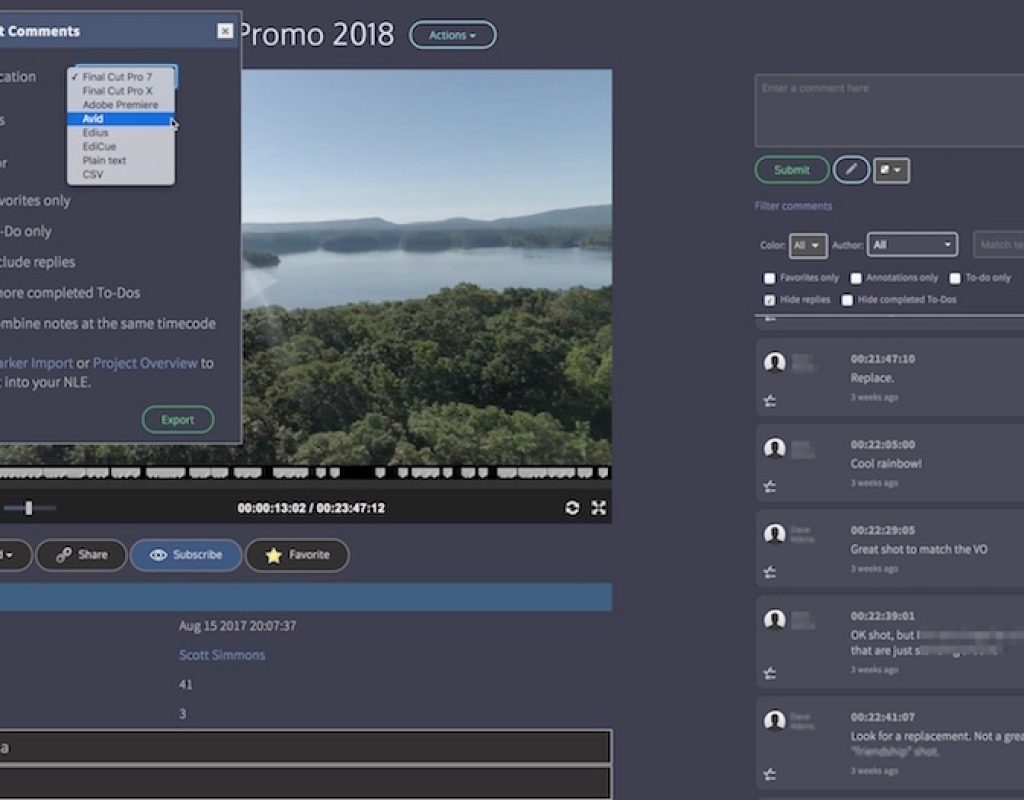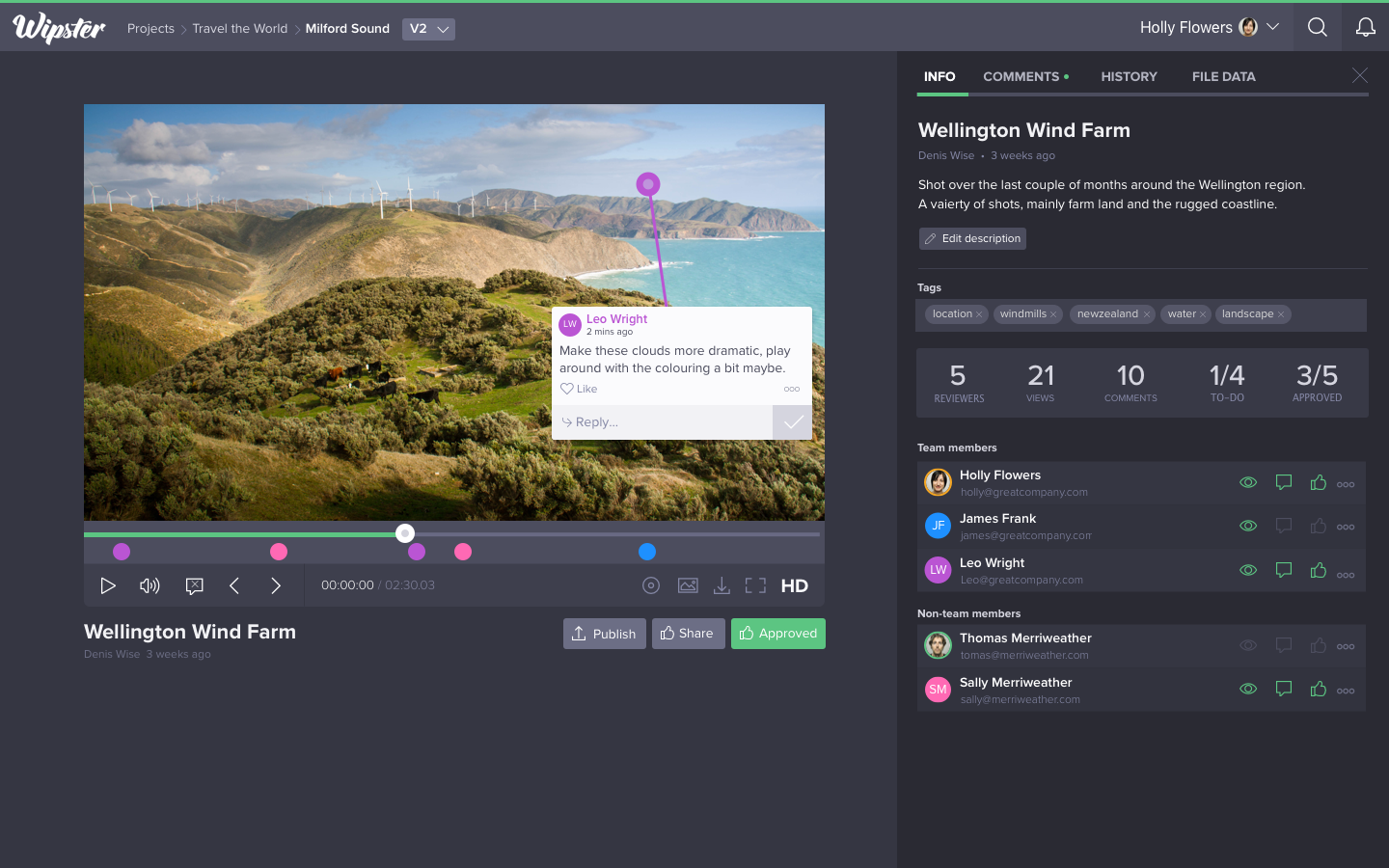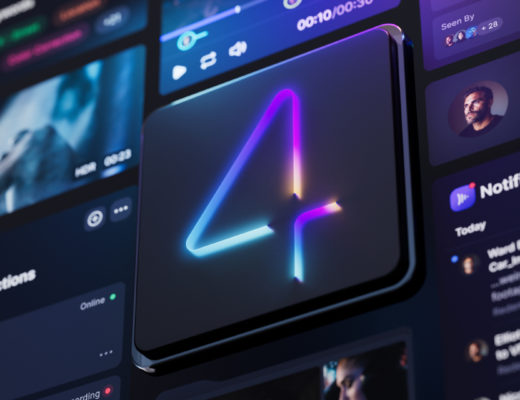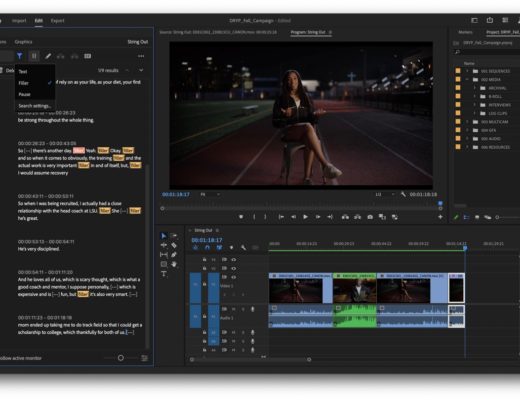Editors have had access to online video Review and Approval services for many years now but I find it’s still difficult to get some clients to use them. This baffles me in a day and age when there are so many alternatives to Vimeo/YouTube/Dropbox links which offer a number of significant advantages (we get into those below).
I began using a review and approval services many years ago with the unfortunately named First Cut Pro (later rebranded as Remark). It was a revelation for several reasons. First and foremost it let reviewers make a comment right in the viewing interface tagged to a specific place in the clip without moving between a viewing application and typing application. Second, it allowed for a much better review experience than what was at the time a kludgy private FTP solution my employer was using. Thirdly I was able to import those comments right into the NLE. What a novel idea! When I wrote the article Review and Approval Options for Video Pros I had no idea there were as many out there as there are.
Here we are some 4 + years later and review and approval services are a dime a dozen. They are affordable and easy to access. But I sometimes still find it’s hard to get clients to use them. I think there’s a variety of reasons but often those reasons aren’t articulated. Instead you might send over a R&A link and you get back an email with vaguely time-stamped notes. Some clients take to it and never look back. Some try it out but regress back to their old ways. Some just never give it a try.
Part of this comes down to education so I’ve written up a few key points about the advantages of a review and approval service.
1. It helps get your cut done faster and better.
When notes on a cut come back to the editor it’s important that the editor digest them in totality and in context of the program itself. This is best done in a single space where the editor can see the comments, in-order and in-line with the video, jump around, play before and after and not have to toggle between applications. A good Review and Approval environment does just that and helps the editor get a grasp on the notes both faster and more importantly better.
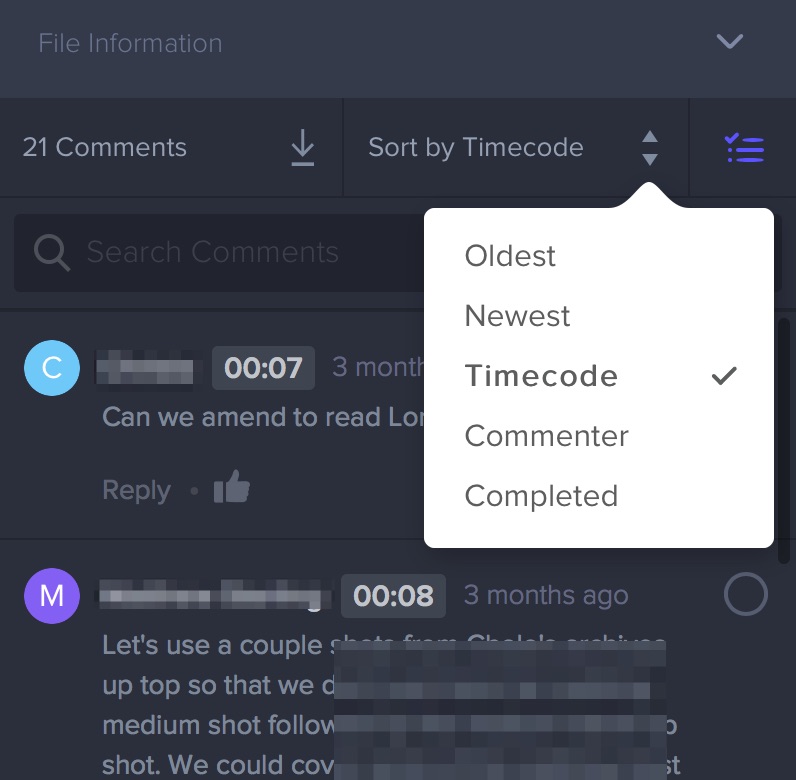
2. It places your comment onto a specific frame.
There’s nothing more frustrating to an editor getting notes than to have something vague like “at 43 seconds in don’t use blue” only to go to 43 seconds into the edit and there be only red. But the shot before is blue, and the shot after is blue. Which is the correct blue shot to lose? One second of video is made up of 24 – 30 frames so that’s a lot of margin for error and when the commentor isn’t diligent noting exactly where they are making a comment and then properly and accurately noting that for the editor. It can lead to incorrect time stamps. That slows down the edit and makes the process of making proper changes sometimes improper.

3. Comments can be more easily kept in context when the edit timing changes.
If part of the notes on an edit is something like “remove the second sound bite” then addressing that note just made the edit shorter. Everything after that comment is no longer going to match review notes that are a minute:second time counter from zero. Yes there are ways to address this by figuring out an offset or doing changes from back to front but a proper Review and Approval system keeps the comments in context all the time since it can put markers into a timeline that can shift with an edit, leading to a faster and more accurate revision.
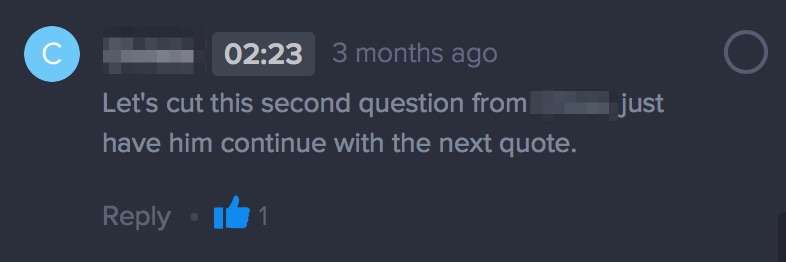
4. Comments can import directly to the NLE.
Piggybacking on number 3, most all Review and Approval services allow you to import comments directly into your NLE as markers. This removes yet another barrier between the cut and the revision as the comments are there in the NLE and those comments can most likely move with timing changes if you work the NLE correctly. This can lead to a faster and more accurate revision.
5. There are playback tools to help you the commentor/reviewer.
Using a Review and Approval system can make life easier for the client and commentor as there are tools to facilitate better commenting. A dedicated playback interface where you can type comments below or next to the playback window is first and foremost. Many services will pause playback when you type, resuming when you hit return. There might be a dedicated jump back 5 seconds button that is very handy. Many will let you draw right on the frame to notate a specific issue.
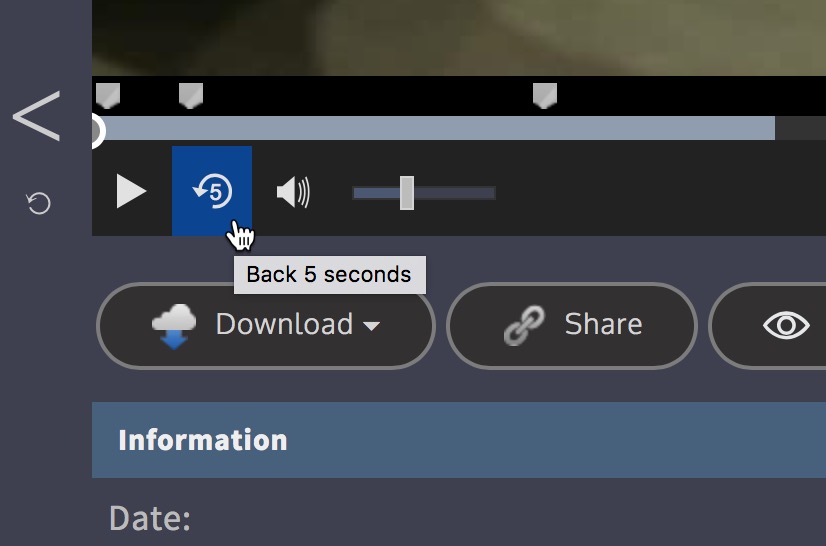
6. No jumping between a browser, email and/or note taking application.
I mentioned this above but the fact you don’t have to toggle between a player and a note taking app is huge. One app to rule them all means less chance for error, no stopping and starting playback over and over, no saving a document when you’re done and no emailing back to the editor. It’s all right there.
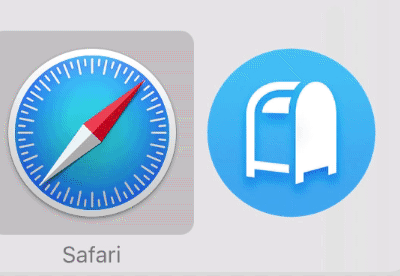
7. There might be a mobile app you can watch on.
So many producers and directors are always on mobile today that a lot of cut reviews are done via a mobile phone. A mobile app like the one Frame.io provides offers up an optimized mobile viewing environment that takes the experience out of a mobile browser and makes it more pleasant for everyone involved.
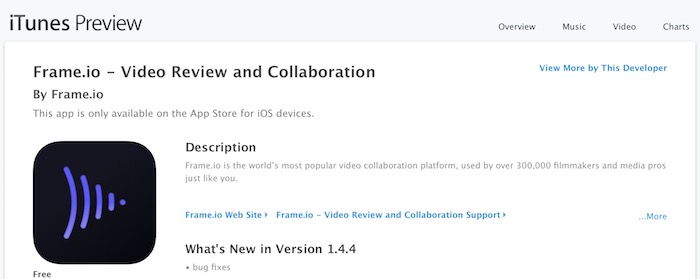
8. Vimeo, Dropbox and YouTube don’t care about your user experience.
As nice as these services are most are optimized for playback and not taking notes and not interacting with the video. Yes some of them allow comments to be made (like Vimeo’s video review) but their inline comments are all an after the fact add-on and not a well integrated experience. A good Review and Approval service excels at this as that’s what there were designed for.
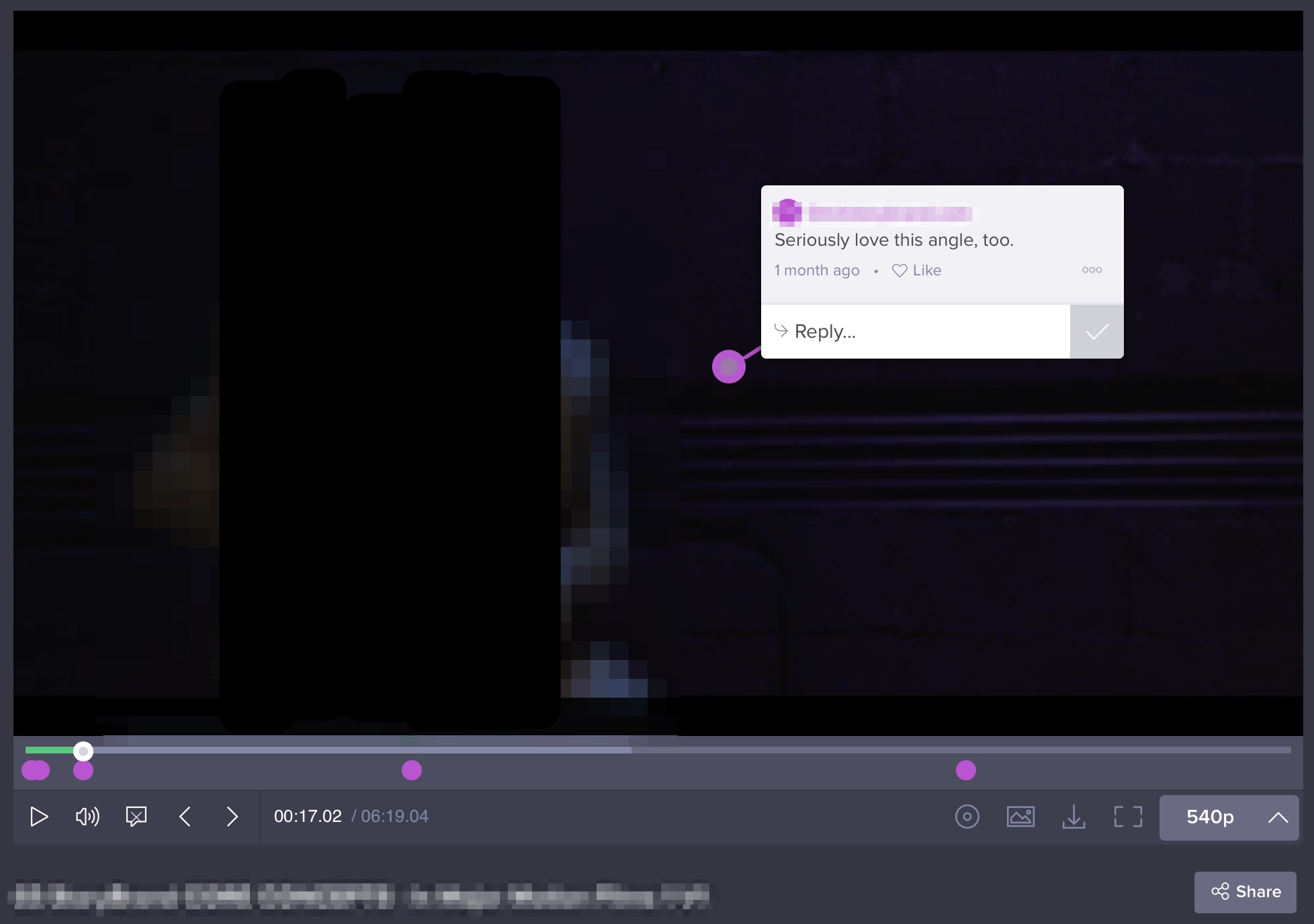
9. You can still download the file to your hard drive.
Most every Review and Approval service I’ve used will allow the H.264 (or other if you choose) file to be downloaded to the viewer’s hard drive. This is important for many producers and directors as they want to watch the program over and over and over and over again. If this happens then you might have trouble getting those comments in the Review and Approval interface but this download option can usually be toggled off.
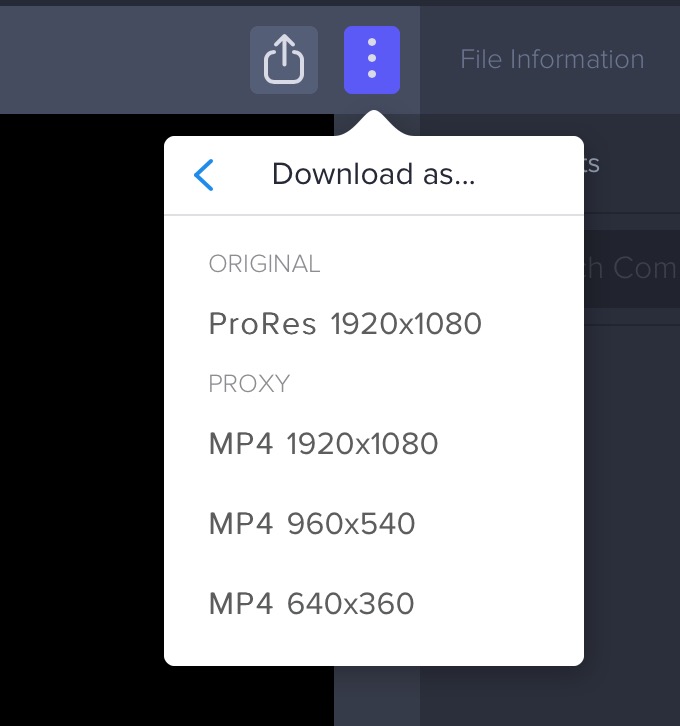
10. You’re stuck in your old ways … change for the better.
I know change can be hard especially if you’ve “always done it this way” but as technology changes so should our behaviors as these changes can often be for the better. And as I said before properly using a good Review and Approval service can lead to a faster and more accurate revision.
What do the Review and Approval services say?
I also reached out to a few of the Review and Approval services that I use and asked them a few questions about the matter. Their responses are below in the order that I received a reply.
What advice do you have for editors to pass along to clients in order to get them to properly use a Review and Approval service and the tools it has to offer?
One common compliant is that stuttering playback is blamed on the Review and Approval service (the new factor in this equation) so they ask to go back to Vimeo/YT/Dropbox. How does your playback engine work in comparison to these services?
With so many people using mobile phones for viewing these days and advice on using a phone with your service?
I got some very detailed replies so I’ve pasted them below, in their entirety with their permission. It’s good to get some insight into these services from their creators. Most every Review and Approval service I’ve come across offers some kind of free trial so you and your clients can try them out. If you have your own Review and Approval service and would like to address these questions yourself then let me know and I’ll update this article.
UPDATE 10/19/2017 with Wipster
Wipster https://wipster.io/
What advice do you have for editors to pass along to clients in order to get them to properly use a Review and Approval service and the tools it has to offer?
As with anything that is new and either adopted, or not – there is a lead time. We find that the majority of our customers will send out a sharelink where the clients and collaborators can make comments right on top of the video, and they will do it IF there is already something on top. For example, as the creator you can make some comments on top of the video posing questions for the clients to answer. Not only does this get the conversation started in the way that will help you, but it gets the client comfortable in doing communication in this totally new way. Sadly there is a very small subset of people who never use the commenting feature, these people only adopt new activities when the alternative is death, so you probably won’t have much success. (I have some people who only ever reply to an email with a phone call… go figure).
One common complaint is that stuttering playback is blamed on the Review and Approval service (the new factor in this equation) so they ask to go back to Vimeo/YT/Dropbox. How does your playback engine work in comparison to these services?
In the very early days of Wipster, and probably a few of the others, we were sticking our product together with chewing gum, and trying to get as many people to use the product to prove that it’s necessary for the industry. This meant the playback was terrible, the app would crash, and sometimes at the very worst the videos just wouldn’t play at all. This is how startups begin. And you attract the early adopters who are willing to live through these terrible times, because they love new stuff (and we love them for it). As time passes you start getting customers who just want a product that works all the time, and they are happy to pay what ever to get it. This is when you’ve proven the market exists, and what you’ve built matters. This is the point where you invest heavily in infrastructure and make the platform more stable (things like CDNs, accelerated uploads, smoother encoding, less buggy core product). We did this about 18 months ago and the product is now incredibly stable, and deals with a ton of video at any one time. You’d be hard pressed to see a difference between one of the Billion dollar platforms and us (we’ll soon probably be one of those Billion dollar platforms).
With so many people using mobile phones for viewing these days and advice on using a phone with your service?
Download the iOS or Android app and let the mood take you. The app is also optimized to work in a browser on any mobile device, so your client doesn’t need to download apps. The one thing we haven’t got to yet is landscape viewing of video with commenting 
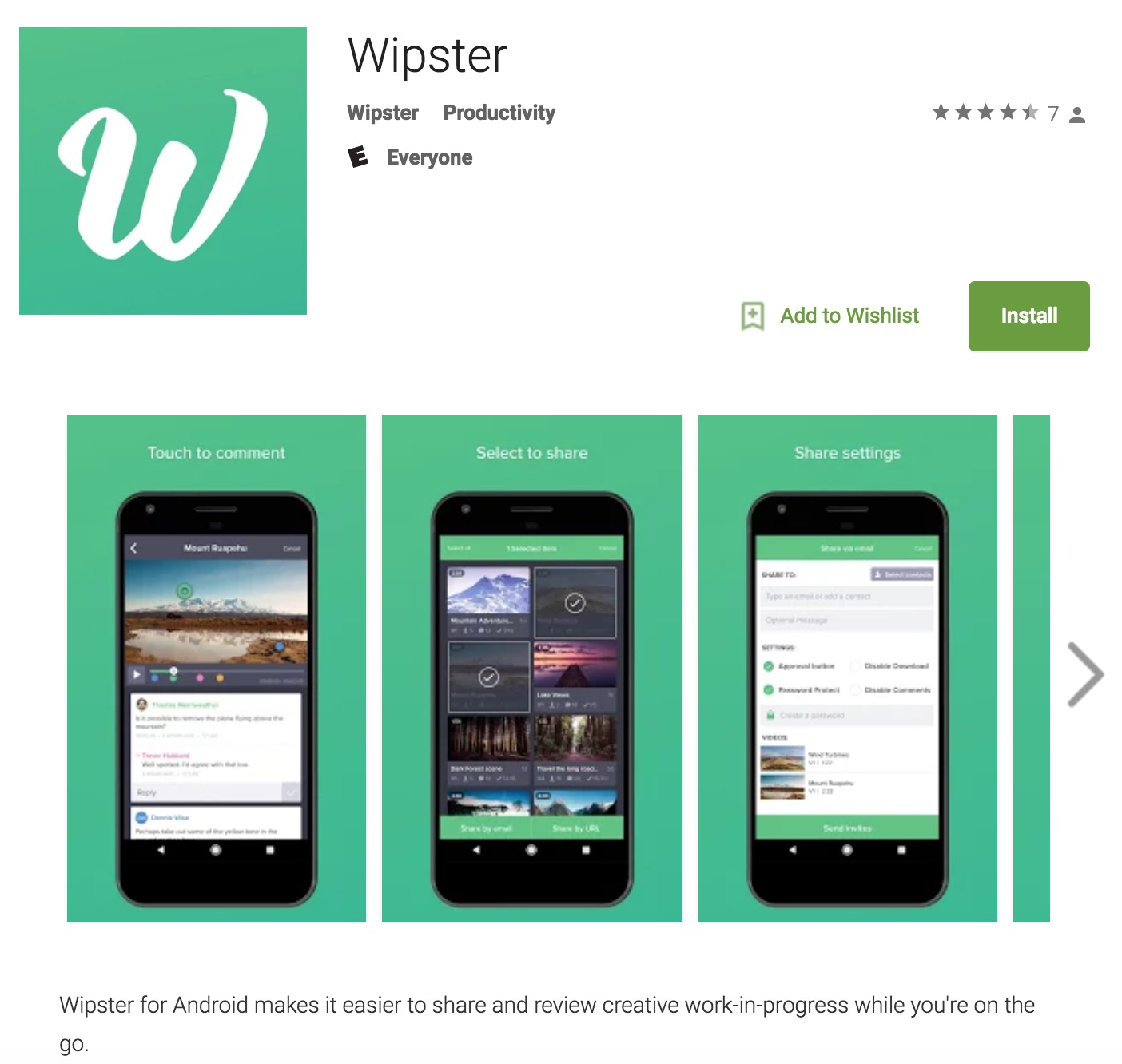
Kollaborate https://www.kollaborate.tv
It’s a tricky problem because it’s important to ensure smooth playback, but at the same time the purpose of a review site is to review video content so you cannot degrade quality too much. Sites like YouTube will degrade all the way down to 240p but that’s pretty useless for our audience.
We’ve been doing this since 2013 and the problem we had in the early days is that we assumed the biggest factor affecting playback experience would be bandwidth, so we aggressively optimized to keep file sizes low. Interestingly, that wasn’t the limiting factor at all – it was CPU performance. If you make the file sizes too small, it taxes the user’s processor significantly more and this can cause stuttering. So over the years we managed to find the best mix of video quality, file size and decoding performance and now I can’t remember the last time we had a playback performance complaint.
You can also control how an H.264 file buffers directly from the encoder, so how the files are encoded is a significant factor in how they play back. We’ve spent a lot of time tuning this. I recently was stuck with a very poor 3G connection for a couple of weeks yet could still play back files on Kollaborate smoothly, with only a slightly longer initial loading delay.
But here are some general guidelines for how to improve playback performance that should apply to all services, not just ours:
- Check your browser – some are much better optimized at video playback than others. Google Chrome is highly optimized. Safari used to be extremely poor at video playback but Apple has made improvements in the last year or two. If you’re using an old version of Safari you should definitely update it or use Chrome instead.
- If you’re on a poor connection, try pausing the video to let it buffer before trying to play it back.
- Video services use a CDN that places the video geographically close to the user so it loads faster. But in a lot of cases that only happens on demand, so the first time they view the video it may not be in the cache. If playback performance is really bad they can try reloading the page after a few minutes, which will allow it to load from the cache where it should be faster.
- Most video services offer you the ability to switch between different playback quality (on Kollaborate you click the HD button to toggle between SD and HD).
- Look for other factors that may be slowing things down – is a cloud backup service like Backblaze running in the background? Are there other devices on your network using data? Is an app on your computer using lots of CPU or RAM? Do you have security software that may be interfering?
- Simple tip: try relaunching your browser or restarting your computer. It can solve a surprising number of issues.
- Finally, if you’re having problems with a specific site, try other sites to see if the problem happens there too. I occasionally have an issue where Firefox stops playing video on every website, which a relaunch usually fixes.
Here are some more Kollaborate-specific tips:
- Kollaborate makes the original file available instantly and doesn’t force you to wait around for it to be converted. So if you upload a video that closely matches our specs (720p MP4, ~3 Mbps bitrate, fast start enabled) you can play it back with good performance immediately without waiting.
- Our CinePlay video player (http://www.digitalrebellion.com/cineplay) allows you to cache files, which downloads the file and plays it back locally on your system but you can still comment and interact as if it was located in the cloud.
- Worst case scenario: you can download the video, make comments in CinePlay or your NLE and then import those comments into Kollaborate.
I don’t have any specific advice for mobile because I have not found a significant performance difference between mobile and desktop. In fact, I often tether my phone’s connection to my laptop and use it with Kollaborate on the desktop with no problems.
I think the biggest barrier though is human nature – people are resistant to new things, especially if they appear complex at first glance. I don’t really know how to solve this. But with Kollaborate it’s assumed that the people setting up the project are more tech-savvy than the clients, so we aim our more complex features towards those users and try to keep them away from clients.
Frame.io https://frame.io
What advice do you have for editors to pass along to clients in order to get them to properly use a Review and Approval service and the tools it has to offer?
I think it all comes down to communication. Improving the way you work requires an investment. It’s important to communicate to your clients that you’re going to be using a tool that will actually make their lives easier. I think the fundamental misconception that clients have is that you’re sending them something that makes their life harder. A simple note like “Hey, we’re going to send you review links on a service we use called Frame.io. It will allow you to leave feedback more easily than email and we’ve found it to be incredibly helpful in speeding up the iteration cycles. If you have a minute I can show you how it works on a screen share but it should be pretty self explanatory. Our previous clients have told us they really love it”. That simple note could dramatically increase the adoption. Then it’s up to us to make sure when a client lands on a Frame.io review link that we’re making it simple enough for them to get started. We show a 60 second explainer video the first time a review link is accessed. We’ve found these to be incredibly helpful. I think lastly, it’s important to not treat our clients as special snowflakes that can’t be bothered to try something new. You’ll have a better relationship with your client when you drive the process and not the other way around. In the end, they will thank you for having a great process. The creative service you provide is not the only value a clients perceives when working with you. How smoothly they reached the end goal is actually a major consideration when choosing to work with you a second time.
One common compliant is that stuttering playback is blamed on the Review and Approval service (the new factor in this equation) so they ask to go back to Vimeo/YT/Dropbox. How does your playback engine work in comparison to these services?
The truth is, most of the Review and Approval services are significantly smaller companies than larger brands like Dropbox or Youtube. The engineering efforts to get smooth reliable playback in a variety of network conditions are complex. We’ve made a huge investment on improving our playback experience and we’re able to do that because we have the scale and resources necessary to dedicate the engineering time.
At Frame.io, we’ve invested most of our own video infrastructure. We’ve built our own transcoding stack where we can optimize the compression for the specific content you’ve uploaded. We’ve built our own javascript player so we have more control over how buffering is handled and how much is buffered ahead of the current frame. We’re currently investing in rebuilding our player to support MPEG DASH and HLS which are the two dominant streaming standards in use by YouTube, Netflix, etc. DASH and HLS essentially let us monitor your bandwidth and serve up the highest quality video possible without buffering. If you’ve ever started a Netflix show, you’ve probably realized the quality starts out really low and then increases as it buffers a higher quality stream in the background. This is MPEG DASH at work. Given that we’ve invested in building all of our video infrastructure, we have tight control over the user experience.
There’s also a third area where Frame.io has made an investment, which is the infrastructure side. A huge factor in your playback experience is how close you are to the server which is serving that video content. So that means if you’re in the UK and trying to access a video stored in the US, you’re going to have a fairly poor experience, likely with a lot of buffering. Typically this problem is solved with something called a content distribution network. A content distribution network caches copies of your content on servers all over the world so when you hit play in the UK, it’s serving the video from a server nearest you (the edge). This works when 1 million people in the UK want to watch the latest viral video on YouTube. YouTube recognizes there are a lot of requests coming from the UK so they cache the content to the edge and then everyone is happy. However, this does not work in a Review and Approve context because it’s not 1 Million people in the UK trying to watch your cut. It’s 1 person. And it needs to playback flawlessly for that 1 person the very first time. There’s no time to cache it to a server near her. So Frame.io uses a totally different infrastructure to serve this 1:1 relationship and it costs us a lot of money. The investment is worth it because we have customers all over the world who tell us what a great upload and playback experience they have on Frame.io.
With so many people using mobile phones for viewing these days and advice on using a phone with your service?
Frame.io has a native iPhone App which actually won an Apple Design Award last year. The main goal with the iOS App was to keep the iteration cycles going, even if you’re not at your desk. Your client can get a notification there is a new cut ready and immediately start watching/leaving notes, right from her phone. Leaving timecode notes is hard enough on the desktop but doing it on a mobile device would just be pure hell. And let’s face it, our clients are increasingly away from their desks and this leads to “feedback paralysis”. They’d rather just wait till they are back at their desk or can talk to you in person vs juggling two screens on mobile and writing notes in an email. Obviously this slows down the iteration cycles which could have a business impact or a creative impact. I know my best creative work always happen when I have tight and timely feedback.

Filmtools
Filmmakers go-to destination for pre-production, production & post production equipment!
Shop Now